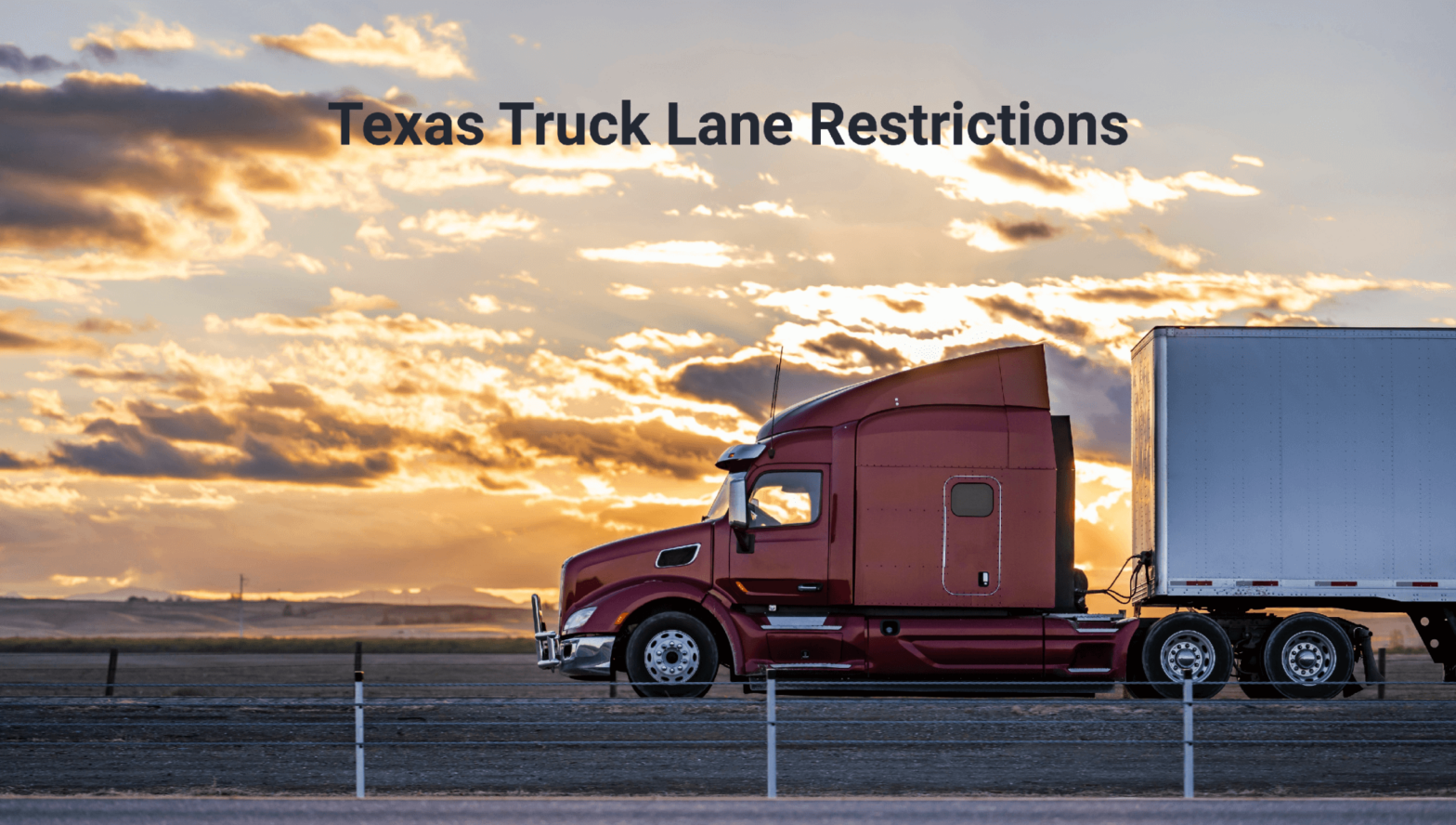 (281) 587-1111
(281) 587-1111
 (281) 587-1111
(281) 587-1111

If you have ever driven on a highway in Texas, you might have noticed a sign that says, “Trucks use the right lane only.” These signs are part of the state’s truck lane restriction program, which aims to improve road safety and efficiency by regulating commercial vehicle movement.
In this article, we will explore the history, benefits, and challenges of truck lane restrictions in Texas and how they impact the trucking industry.
The first truck lane restrictions in Texas were implemented in the 1970s as part of the National Maximum Speed Law, which set a nationwide speed limit of 55 mph in response to the oil crisis and concerns about highway safety. The law required trucks to stay in the right lane to reduce the speed differential between trucks and cars and minimize the risk of accidents.
In the 1990s, the Texas Department of Transportation (TxDOT) launched a pilot program to test truck lane restrictions on two highways in the Houston area. The program successfully reduced accidents and improved traffic flow, and TxDOT expanded the program to other highways across the state.
Today, there are more than 1,500 miles of truck lane restrictions on Texas highways, covering some of the state’s busiest and most congested corridors. Texas truck accident statistics show we need all the help we can get in reducing crashes.
Truck lane restrictions offer several benefits to both truck drivers and other motorists on the road. Here are some of the most significant advantages of this program:
Despite their benefits, truck lane restrictions also present some challenges and concerns for the trucking industry. Here are some of the most significant challenges of this program:
Truck lane restrictions significantly impact the trucking industry, as they affect the way carriers and drivers operate on the road. Here are some of the most significant ways that truck lane restrictions impact the trucking industry:
Interstate 45 (I-45) – I-45 north of Houston has truck lane restrictions. Big rigs cannot use the left lane between 610 Loop and The Woodlands.
U.S. 290 – U.S. 290 has about 20 miles of restricted lane travel for 18-wheelers headed northwest from Houston.
Interstate 10 (I-10) – I-10 has restricted travel in the left lanes headed East out of Houston.
State Highway 225 – The LaPorte Freeway has restrictions for big trucks from Houston to LaPorte.
These routes also happen to be among the deadliest highways in Texas.
Truck lane restrictions prevent trucks from using the left lane as a travel lane. A commercial truck driver can only use the left lane to pass traffic or in certain other specified circumstances that allow a truck driver to use the left lane due to hazardous conditions.
Citations issued to truck drivers can carry a fine of $200 if they use the left lane in a restricted area for travel and not for passing slower vehicles.
Statistics have shown that implementing truck restrictions has reduced the number of truck accidents on the designated portions of highways in Texas.
According to the Texas Department of Transportation, implementing lane restrictions has made our highways safer while not reducing traffic or freeway speed or requiring alternate routes for big trucks.
Trucking accidents, including rules violations, are one reason truck accident settlements are larger than passenger vehicle crashes.
Contact the trucking accident attorney at Baumgartner Law Firm in Houston for help!
(281) 587-1111
Why are Settlements Larger for Truck Crashes?
Accidents With Stalled or Parked Big Rigs
What are the Most Common Mechanical Failure for Big Rigs?
How Can Truck Accidents Be Prevented in Texas?
Texas Trucking Accident Statistics
Federal Regulation of Truck Drivers
The Difference Between Car Accidents and Big Truck Wrecks
What is the Average Semi-Truck Settlement?
What are the Most Common Mechanical Failures for Big Rigs?
How Long Does it Take to Settle an 18-Wheeler Accident Case?
What are the Insurance Requirements For 18-Wheelers in Texas?
Are Truck Drivers Required to Be Drug Tested After an Accident in Texas?
Houston Fatal Truck Accident Lawyer
Federal Regulation of Truck Drivers
6 Mistakes to Avoid When Filing a Truck Accident Claim
Blind Spot Truck Accident Lawyer in Houston
NEED HELP? HAVE QUESTIONS?